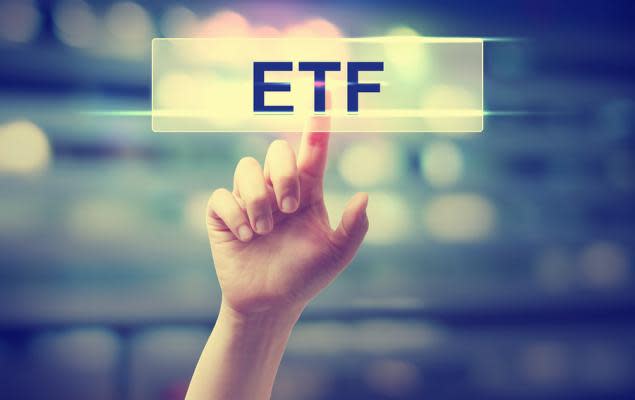Time to Buy Senior Loan ETFs as Rates Hit a 16-Year High?

Wall Street has been upbeat in the first half of 2023 despite a few occasional hiccups, mainly due to a less-hawkish Fed, better-than-expected corporate earnings and the AI mania. However, Wall Street’s run in the second half of the year hasn’t been smooth so far as rates have been rising.
The U.S. Treasury yields have been on a surge lately, driven by expectations that the Fed will keep interest rates higher for longer to fight inflation. At the July meeting, the majority of Fed members observed 'significant upside risks' to inflation.
As of Aug 21, 2023, the benchmark U.S. treasury yield surged to 4.35% -- the highest level since 2007, up from 4.05% recorded at the start of the month. Given this, investors must be interested in finding out all possible strategies to weather a sudden jump in the benchmark interest rates. Senior loan ETF investing is one such option.
What is Senior Loan ETF Investing?
Senior loans are floating rate instruments thus providing protection from rising interest rates. This is because senior loans usually have rates set at a specific level above LIBOR and are reset periodically which help in eliminating interest rate risk.
Further, as the securities are senior to other forms of debt or equity, senior bank loans offer lower default risks even after belonging to the junk bond space. Relatively high-yield opportunity coupled with protection against potential rise in interest rates in the current rising rate environment makes it a good bet.
Inside Appeal of Senior Loan ETFs
Income Generation: One of the most attractive features of Senior Loan ETFs is their potential to generate consistent income. The higher interest rates associated with these loans can translate into attractive yields for investors seeking regular payouts.
Floating Interest Rates: Unlike most bonds with fixed interest rates, senior loans usually come with floating interest rates that are tied to a benchmark, such as the London Interbank Offered Rate (LIBOR). This feature can act as a natural hedge against rising interest rates, as the coupon payments adjust with changes in the benchmark rate.
Diversification: Senior Loan ETFs pool together a diversified portfolio of senior loans from various companies across different sectors. This diversification can help spread risk and reduce the impact of defaults from individual issuers.
Lower Interest Rate Risk: Because senior loans have floating interest rates, they are generally less sensitive to changes in market interest rates compared to fixed-rate bonds. This characteristic can be especially beneficial in a rising interest rate environment.
Inside the ETFs
Virtus Seix Senior Loan ETF (SEIX) – Yields 7.59% annually
Seix looks to generate competitive absolute and relative risk-adjusted returns over the full market cycle through a bottom-up focused, top-down aware process. It charges 57 bps in fees.
Highland/IBoxx Senior Loan ETF (SNLN) – Yields 7.46% annually
The underlying Markit iBoxx USD Liquid Leveraged Loan Index is a rules-based index consisting of some of the largest, most liquid Leveraged Loans, as measured by the number of active market participants trading the security and the dollar face amount of outstanding senior loans issued. It charges 56 bps in fees.
(Disclaimer: This article has been written with the assistance of Generative AI. However, the author has reviewed, revised, supplemented, and rewritten parts of this content to ensure its originality and the precision of the incorporated information.)
Want the latest recommendations from Zacks Investment Research? Today, you can download 7 Best Stocks for the Next 30 Days. Click to get this free report
Highland/iBoxx Senior Loan ETF (SNLN): ETF Research Reports
Virtus Seix Senior Loan ETF (SEIX): ETF Research Reports
